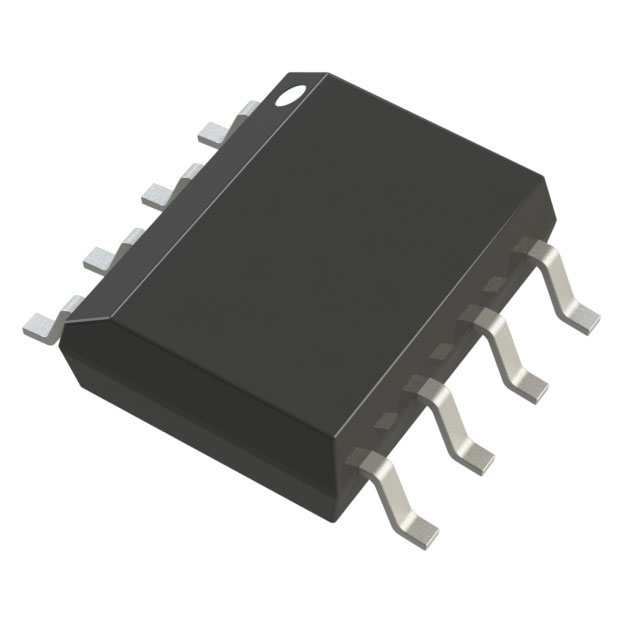ADA4899-1YCPZ-R7
Manufacturer No:
ADA4899-1YCPZ-R7
Manufacturer:
Description:
IC OPAMP VFB 1 CIRCUIT 8LFCSP
Datasheet:
Delivery:





Payment:




In Stock : 12768
Please send RFQ , we will respond immediately.









ADA4899-1YCPZ-R7 Specifications
-
TypeParameter
-
Supplier Device Package8-LFCSP (3x3)
-
Package / Case8-WFDFN Exposed Pad, CSP
-
Mounting TypeSurface Mount
-
Operating Temperature-40°C ~ 125°C
-
Voltage - Supply Span (Max)12 V
-
Voltage - Supply Span (Min)4.5 V
-
Current - Output / Channel200 mA
-
Current - Supply14.7mA
-
Voltage - Input Offset35 µV
-
Current - Input Bias6 µA
-
-3db Bandwidth600 MHz
-
Slew Rate310V/µs
-
Output Type-
-
Number of Circuits1
-
Amplifier TypeVoltage Feedback
-
PackagingCut Tape (CT)
-
PackagingTape & Reel (TR)
-
Product StatusActive
-
Series-
The ADA4899-1YCPZ-R7 is a high-speed, low-distortion operational amplifier (op-amp) integrated circuit chip manufactured by Analog Devices. It offers several advantages and finds application in various scenarios:Advantages: 1. High Speed: The ADA4899-1YCPZ-R7 is designed for high-speed applications, with a bandwidth of 1.8 GHz. It can handle fast signal processing requirements, making it suitable for applications that demand high-speed amplification.2. Low Distortion: This op-amp chip provides low distortion and high linearity, ensuring accurate signal amplification and faithful reproduction of the input signal. It is ideal for applications that require precise amplification without introducing significant distortion.3. Wide Supply Voltage Range: The ADA4899-1YCPZ-R7 operates over a wide supply voltage range of ±2.5V to ±12V. This flexibility allows it to be used in various systems with different power supply configurations.4. Low Input Bias Current: With a low input bias current of 1.5 pA, this chip minimizes the impact of input current on the circuit's performance. It is suitable for applications that require high input impedance and low current flow, such as sensor interfaces and transimpedance amplifiers.5. Rail-to-Rail Output: The op-amp chip offers rail-to-rail output swing, enabling it to drive signals close to the power supply rails. This feature is beneficial in applications where the output signal needs to cover a wide dynamic range.Application Scenarios: 1. High-Frequency Signal Amplification: The ADA4899-1YCPZ-R7's high bandwidth and low distortion make it suitable for amplifying high-frequency signals, such as in RF communication systems, broadband amplifiers, and high-speed data acquisition.2. Audio Amplification: The low distortion and high linearity of this op-amp chip make it well-suited for audio amplification applications. It can be used in audio preamplifiers, headphone amplifiers, and audio mixers to ensure accurate and faithful reproduction of audio signals.3. Instrumentation and Measurement Systems: The ADA4899-1YCPZ-R7's low input bias current and high input impedance make it suitable for precision measurement applications. It can be used in instrumentation amplifiers, data acquisition systems, and sensor interfaces to amplify and process low-level signals accurately.4. Active Filters: The high-speed capabilities of this op-amp chip make it suitable for active filter designs. It can be used in active low-pass, high-pass, band-pass, and notch filters to achieve precise frequency response characteristics.5. Test and Measurement Equipment: The ADA4899-1YCPZ-R7's high bandwidth and low distortion make it suitable for use in test and measurement equipment, such as oscilloscopes, signal generators, and spectrum analyzers. It can help maintain signal integrity and accuracy in these applications.Overall, the ADA4899-1YCPZ-R7 op-amp chip's high speed, low distortion, wide supply voltage range, low input bias current, and rail-to-rail output make it a versatile choice for various high-performance applications requiring accurate signal amplification and processing.
ADA4899-1YCPZ-R7 Relevant information
-

AD8034ARZ-REEL7
Analog Devices Inc. -

CA3140AMZ
Renesas Electronics America Inc -

OP07CPZ
Analog Devices Inc. -
LT1636CMS8#TRPBF
Analog Devices Inc. -
LT1490ACS8#TRPBF
Analog Devices Inc. -
LTC2055HMS8#TRPBF
Analog Devices Inc. -
AD8227BRMZ-R7
Analog Devices Inc. -

AD8227BRZ-R7
Analog Devices Inc. -

AD623ARZ-R7
Analog Devices Inc. -
AD623ARMZ-REEL7
Analog Devices Inc.







